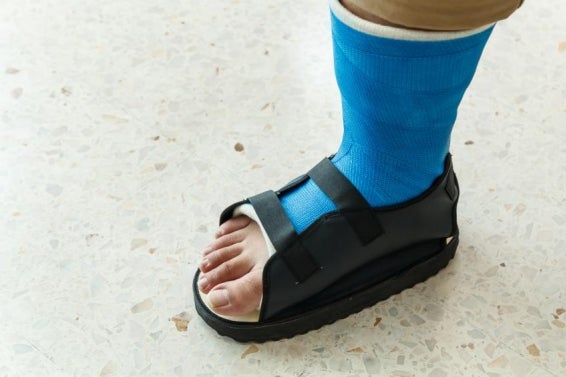View Providers
Your ankle provides support and movement for your whole body. Your ankle joint has three bones—the end of the shinbone (tibia), the end of the other lower leg bone (fibula), and the talus bone. Ankle fractures and dislocations can be simple or complex. Simple ones involve just one bone, while complex ones affect multiple bones.
Stress fractures are small cracks in a bone. In the ankle, they result from overuse and repeated high-impact activities.
Symptoms and disability vary depending on how many bones are involved in the ankle fracture or dislocation. Symptoms can include:
- Bruising
- Deformity
- Difficulty walking or bearing weight
- Pain or tenderness
- Swelling
Your doctor can tailor your treatment plan to your specific ankle fracture or dislocation. But individualized care starts with a conversation. Here are topics to bring up with your doctor that will help him or her decide the best course of treatment—for you.
Describe Your Injury and Symptoms
Your doctor will want to know how you injured your ankle. For example, did you twist your ankle when you fell? And how far did you fall? Were other body parts involved in the fall? It can tell your doctor a lot about what type of injury you have.
Your doctor will also want to know about your symptoms. Try to describe them in detail. Here are some specific questions your doctor may ask you:
- Is there pain when the leg is resting?
- Does the pain get worse with standing and activity?
- Does the pain decrease with rest?
- How severe is the pain, with 10 being unbearable?
- Did the pain start gradually or immediately?
You should also pay attention to any changes in your gait, such as limping, feeling unstable, or walking in a different way.
After examining your ankle, your doctor will likely order imaging tests. An X-ray is the most common test, but your doctor may also order a CT (computed tomography) scan or an MRI (magnetic resonance imaging). MRIs can be useful to find stress fractures or soft tissue damage.
Explore Your Treatment Options
Fortunately, many ankle fractures heal without surgery. Surgery may be necessary if a bone is out of place (dislocated), part of a bone has broken off, or the ankle is unstable. Depending on the location and severity of the fracture, treatment may include:
- Icing or warming the ankle as directed
- Not bearing weight on the ankle
- Resting the ankle
- Taking over-the-counter pain relievers
- Wearing a splint, cast or boot
Ask your doctor why he or she thinks a certain treatment is right for you, and what other options might be available if the treatment doesn’t help. Ask how long it may take for symptoms to subside and when you can return to activities. Your doctor may recommend another set of X-rays as you heal. Having a plan may help you feel better.
Talk About What to Expect After Recovery
Some ankle fractures require rehabilitation to get you back to your activities. Others simply need time. Either way, ask your doctor or physical therapist what you can expect after recovery. In some cases, ankle function and gait may never fully return to pre-injury levels. And chronic conditions, such as arthritis, can develop after an ankle fracture or dislocation. Knowing what to expect may help you set realistic, long-term expectations.
If you had a stress fracture, you need to learn ways to avoid the problem in the future. You may need to alternate days of activity with inactivity or high-impact with low-impact activities. Your doctor or physical therapist may also recommend cross-training to avoid repeated stress from the same activity.





